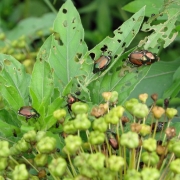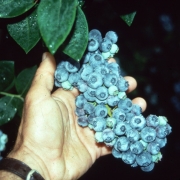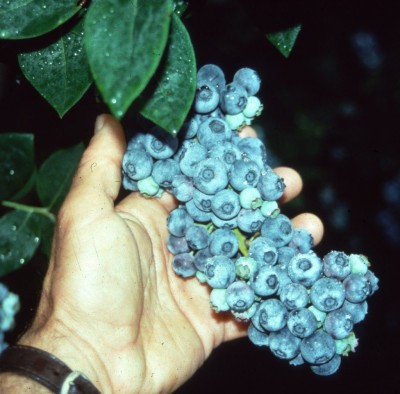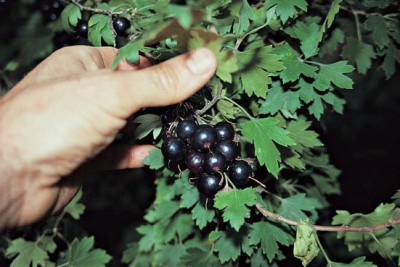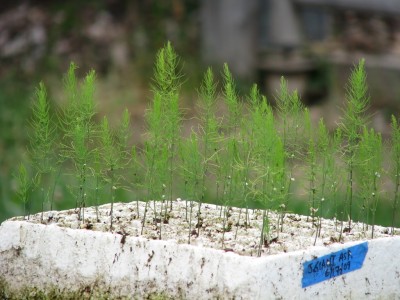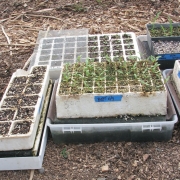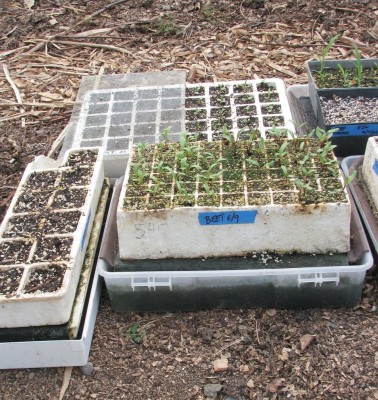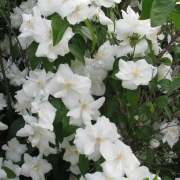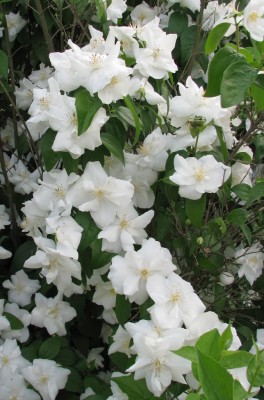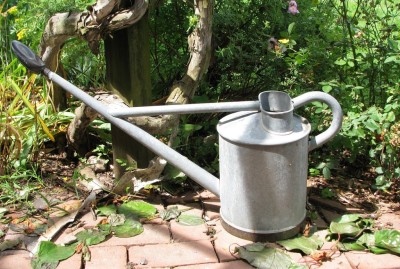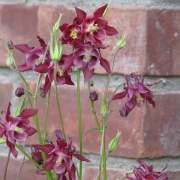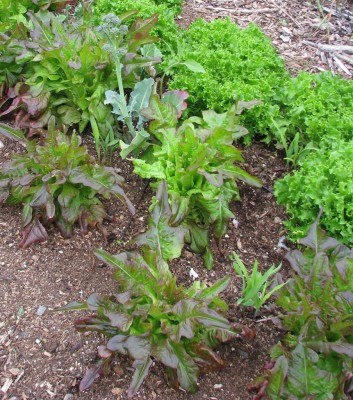[jap beetles, rains and weeds, paper and chips]
Friends have made sightings and I’m braced for an onslaught. I even saw a couple of Japanese beetles myself a few days ago but now they seem to have gone underground. (Figuratively, that is. They won’t be laying eggs in the soil and living underground as grubs for at least a month.) I’m sure I’ll be seeing the metallic green beetles again soon.
I’m at a loss for what to do. Spraying pesticides is out of the question. I have too many plants, too many of which are edible. Poisons on edibles sort of takes the enjoyment out of eating them. I guess if I had one or two prized plants struggling along under attack from Japanese beetles, I might resort to sprays. Then again, I could just wrap them in some fine mesh material such as Remay.
I’m not planning to put out the beetle traps I positioned around my yard for the past few years. Up until a few years ago, beetles were never a problem and when they became just a little problem, the traps captured what few beetles ventured here. But last year, the traps’ bags were bulging with masses of fidgeting beetles every day during beetle season. The traps probably attracted more beetles than would have made their way here in the absence of the alluring scent of the traps.
I am taking some action on some of the beetle’s favorite plants: grapes, hardy kiwifruit, and filberts. That action is a spray of kaolin clay, sold as the commercial insect repellent called Surround. Research suggests some effectiveness, hopefully enough for me to make it to the end of beetle season without doing anything else except tolerating some lacy leaves.
************************************************
Each year’s garden has its themes, and this year – I hate to admit it – the theme is weeds. (I hate to admit it because I wrote a book entitled Weedless Gardening.)
Rain is the reason for all this weed growth. It’s like a rain forest here. Turn your back on the garden for a few minutes, or stand in place for a while, and the garden or you get are likely to be swallowed in vegetation.
In seasons past, especially dry seasons, drip irrigation would pinpoint water to quench the thirst of all my vegetable without coaxing weed growth where vegetables were not, such as paths. Mulch would seal moisture into the ground for my other plants, which I would coddle with supplemental water only their first season.
I’m not complaining, though, because all my vegetables and flowers and shrubs are also growing well. I finally have returned me garden to sufficient weedlessness. It just took more weeding and mulching to get it to that stage.
**************************************************
One savior in this war with weeds has been a building product variously known as red rosin paper or standard dry sheathing, perhaps other names also. It’s a thick, absorbent paper that comes in long rolls and is often used as underlayment for floors.
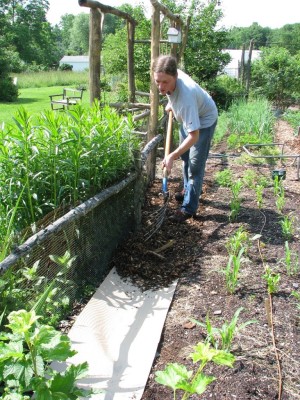
Not here, though. I’m using the paper as an underlayment for mulch. I’ve used newspaper the same way except this year I had 30 foot long paths to cover. Those paths have had year after year of wood chip mulch but the covering was getting thin and, with all the rain, too many weeds were beginning to appear.
So all I did was roll out the paper, then top it with just enough wood chips to hide the paper. Water can get through the chips and the paper but the combination smothers weeds for lack of light. Paper is an organic material so will eventually decompose. As long as the soil is not disturbed, which awakens seeds buried within, few weeds should appear especially as I replenish the chips every year or two. And if things get bad again, I’ll just re-paper the paths.

